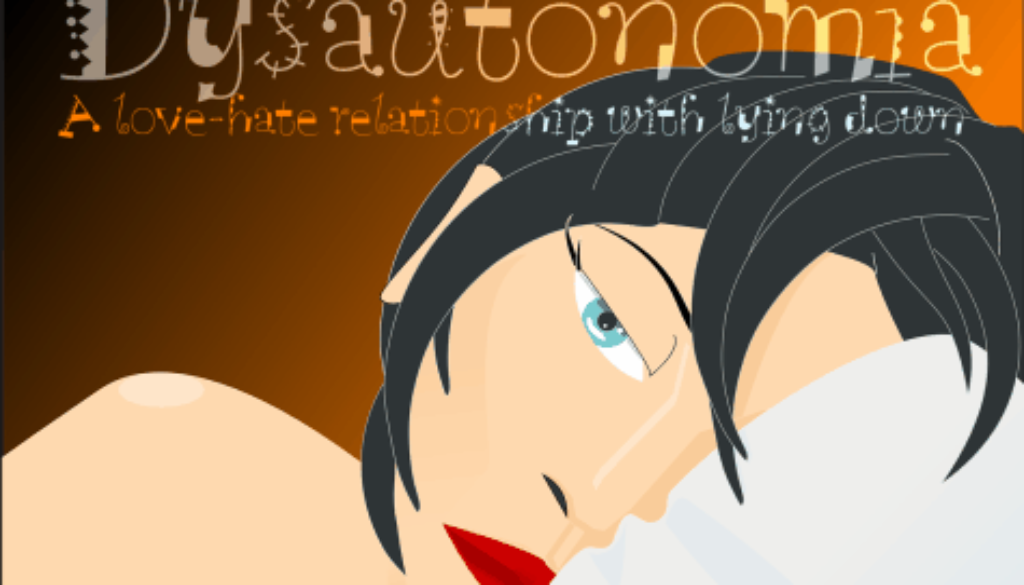Dizziness – Migraine – Could they be Dysautonomia Symptoms?
If you feel dizzy, weak, or faint when you stand up or get up from lying down, the culprit could be dysautonomia symptoms. And missing the diagnosis could lead to some serious problems.
We’ve been talking quite a bit about fainting and migraine lately, and of course dizziness and vertigo are a constant topic. 25-35% of migraine patients experience vertigo, for example. And as we discussed back in April, migraine patients are more likely to faint in general, though fainting during an attack is not common.
Could there be another condition – such as dysautonomia – underlying this and other symptoms of migraine?
What is Dysautonomia?
Dysautonomia is a disorder of the autonomic nervous system. This relates to many of the things that your body controls automatically, without you thinking about it – things like the function of your heart or bladder.
As is the case with “headache”, dysautonomia is an umbrella term used to describe a problem that may come on its own or related to another disease (such as diabetes or Parkinson’s disease). So if you have “dysautonomia”, the next question would be “which one?”
As is also common with headache and migraine, health providers aren’t always in agreement about what those sub-types should be called. Beyond the terms that actually use “dysautonomia” in the name are terms with words like “hypotension” (low blood pressure) and “syncope” (fainting), “orthostatic” (relating to upright posture) and “postural” (posture related).
Dysautonomia Symptoms
These terms relate to the most common (though not universal) dysautonomia symptom – faintness, dizziness and/or weakness when you sit up or stand up. This happens to everyone under certain conditions, but for someone with dysautonomia the body can’t properly regulate blood pressure, causing it to drop suddenly when you get up.
 Other common dysautonomia symptoms relate to bowel and urinary tract function. For example, diarrhea at night, abdominal pain, frequent urination, or inability to urinate when you need to (or not realizing that you need to).
Other common dysautonomia symptoms relate to bowel and urinary tract function. For example, diarrhea at night, abdominal pain, frequent urination, or inability to urinate when you need to (or not realizing that you need to).
Fatigue is also common in dysautonomia.
Many of the dysautonomia symptoms listed here will be familiar to migraine patients – brain fog, photophobia or phonophobia, nausea, insomnia, and dizziness, to name a few.
Dysautonomia can be tricky because sometimes the symptoms are hardly noticeable – or may not be present at all. Often patients won’t bother mentioning slight changes in their stool (poop), for example.
Types of Dysautonomia
Some kinds of dysautonomia don’t come directly with another disease – you can call this “primary dysautonomia”. “Secondary dysautonomia”, then, is directly related to another disease, such as diabetes. As with secondary headache, treatment focuses on the main disease.
Dysautonomia may also be degenerative or non-degenerative. Degenerative types get progressively worse over time, and can be fatal. One example would be multiple system atrophy (MSA).
Non-degenerative dysautonomia would include postular orthostatic tachycardia syndrome (PoTS) – which can be very serious and disabling.
You can find some types of dysautonomia listed here.
Dysautonomia and Migraine
Headaches and other migraine symptoms are common in dysautonomias. You would think that researchers would have noticed the connections between migraine and dysautonomia – and you would be right. Recently we discussed the link between migraine and Parkinson’s. Patients with dysautonomias have noted headache and migraine attacks as common symptoms or comorbid disorders.
In research, links between migraine and certain types of dysautonomia have sometimes been obvious, though at other times there seems to be no connection at all. This is not a surprise, since there are many kinds of migraine just as there are many kinds of dysautonomia.
But at the end of the day, it is common to suffer from migraine attacks as well as dysautonomia symptoms. Why the two are sometimes connected is not clear.
Do I have Dysautonomia?
It is very important to get a specific diagnosis if you can – and that goes for both migraine and dysautonomia, which are both umbrella terms.
If you’ve noticed problems with weakness and dizziness when you get up, and it happens consistently, you’ve been blessed with a big clue. If some of the other symptoms above sound familiar, you may have more clues. (Sometimes there are few, very mild, or no symptoms at all.)
Your doctor will want to know as much as possible about your symptoms, even if they are mild. Then she will want to do some tests.
The tilt-table test is key. The patient will lie on a table which will (you guessed it) tilt at varying degrees to test symptoms and blood pressure.
Other tests may include breathing tests, gastrointestinal tests, bladder function tests, and sweat tests. Read more here.
To be continued…
We will continue our discussion of dysautonomia tomorrow, looking at what you can expect if you’re diagnosed, and what challenges you may face especially if you have headache and/or migraine at the same time.


bunnygiddy
3 July 2015 @ 5:43 am
Jennifer White, this made me think of you http://t.co/uJpSsGeGn6
4 July 2015 @ 5:00 am
I have those symptoms and I have been wondering what causes my symptoms, I will ask my Dr. about that next time I go.
The Impact of Dysautonomia on Migraine – ✧✧✧
16 October 2017 @ 3:07 pm
[…] http://headacheandmigrainenews.com/dizziness-migraine-could-they-be-dysautonomia-symptoms/ […]
14 January 2018 @ 11:06 am
I am wondering how many people have migraines, get them treated with Botox, and then develop dysautonomia?